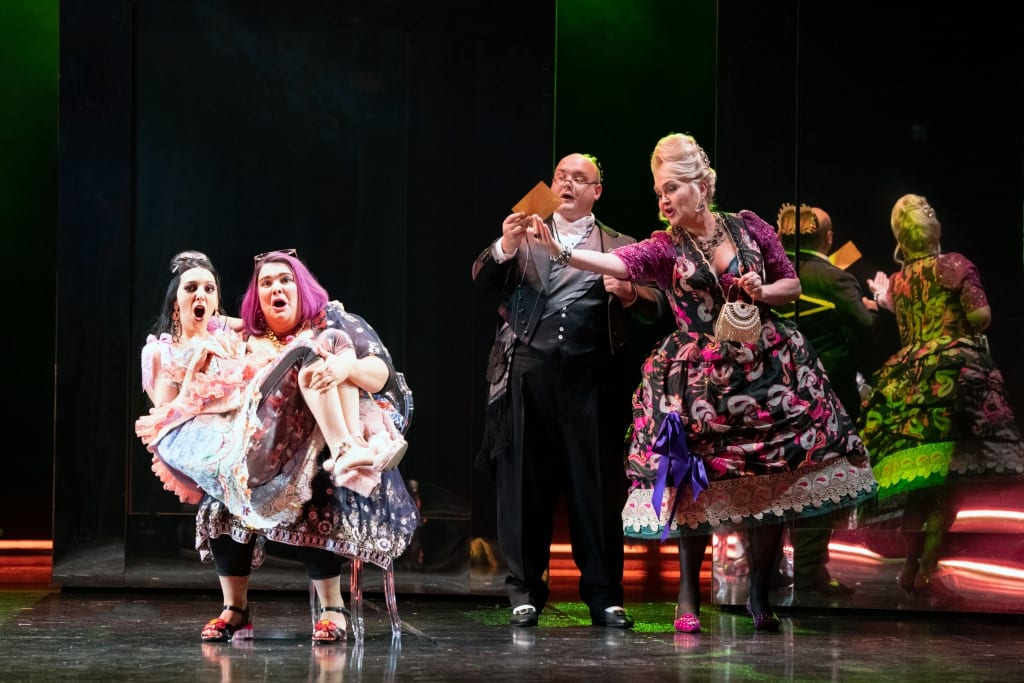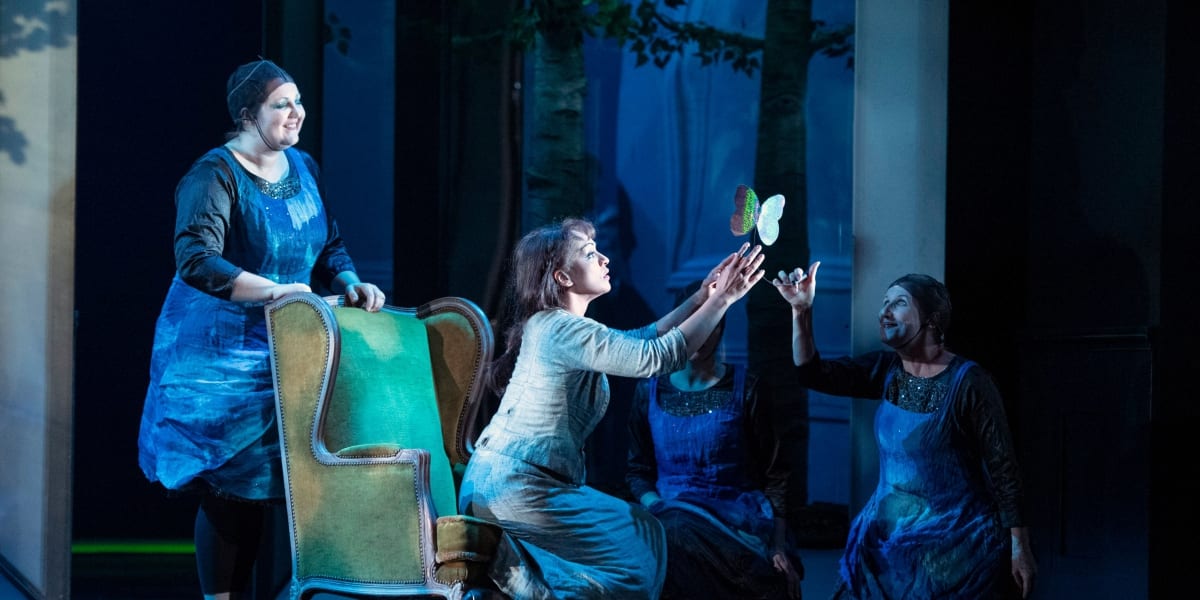Any visit to Glyndebourne is an event, not solely a performance. Undoubtedly, it is not only its highly-rated opera, but also Glyndebourne’s astounding location, that brings it almost universal acclaim.
The journey to Glyndebourne is simple enough – an hour-long train from London Victoria to Lewes, and then a ten-minute shuttle in a specially arranged coach to Glyndebourne, which is timed to meet the train. The house and grounds that greet the arriving visitor show the beauty of the English countryside at its best, with rolling hills dotted with sheep.
Audiences at Glyndebourne are advised to arrive at least one or two hours before the show begins, allowing time to wander about in the gardens and to get a feel for the place. The grounds themselves are something to behold – wide, rolling green English lawns enclosed by superb planted beds, which conjure a scene of great natural beauty. There are bars and even a deli dotted around to purchase food and drink, but most people bring their own picnics. It’s part of the tradition. Just settle down somewhere on the lawn and enjoy the surroundings.
Cendrillon, by Massenet, is an opera in four acts, telling a story which is based on the fairy tale of Cinderella. First staged in Paris in 1899, the opera enjoyed immediate success, although it took 40 years to come to England, where it premiered with a performance in Swindon in 1939.
The journey through the story includes some wonderful operatic moments, with formidable singing arias, sung by some excellent and strong voices. Much of the singing is for women’s voices – and here a number of women’s performances were outstanding, particularly Agnes Zwierko as Madame La Haltiere (contralto), the soprano Danielle de Niese in the title role, and Kate Lindsey as Prince Charming (falcon, between a soprano and mezzo-soprano). The orchestra was spirited and faultless, conducted by John Wilson.

Despite the slightly more serious additions to the original children’s story, the opera has a light-hearted touch, with comedy playing an obvious role throughout. For example, Madame de la Haltière, (Cendrillon’s step-mother), and her daughters are portrayed as brash and deeply unpleasant – and their contemporary crassness creates an excellent focal point for some inventive staging and slapstick humour.
The pathetic nature of Pandolfe, Cendrillon’s browbeaten father, follows much of the same lines. These characterisations evinced similarities to the English pantomime, where Cinderella is often performed. Another obvious link to pantomime is the ‘breeches’ role, wherein the female voice of Kate Lindsey undertakes the romantic and lovesick Prince Charming. Fiona Shaw develops this gender confusion, often interchanging men with women, even in the male fairies who nimbly support the Fairy Godmother, played wonderfully by Nina Minasyan.
Whilst the humour and deliberate confusion of gender is reminiscent of pantomime, at times the performance was almost magical and fairy-like. The balletic nature of the fairies certainly hints at this, with highly choreographed movements around the stage. The costumes and set design clearly complement this. The set, for instance, is based on three mirrored screens, which are regularly shifted and adapted to fit the scene. For example, as Prince Charming desperately searches for his new-found love, the screens are illusively portrayed as mirrors, or frustratingly illuminate only the silhouette of his beloved Cendrillon – but not the reality, which compound his frustration. The screens were cleverly used too as the backdrop to the grandest of ballrooms, or the most natural of forests. Shaw repeatedly uses these themes of reflection and parallels – and it worked extremely effectively. Seemingly, this use of mirrors is one that Shaw desires to expound upon, and the idea of parallelism often comes across. We see, for instance, the adult Cendrillon dreamily looking down upon her younger self, or how the two lovers imitate each other in song while in the forest.
Cendrillon and Glyndebourne presented a magical afternoon and evening – a bewitching fairy tale of an opera, impeccably performed and staged in the most quintessential of settings. Go if you possible can.

